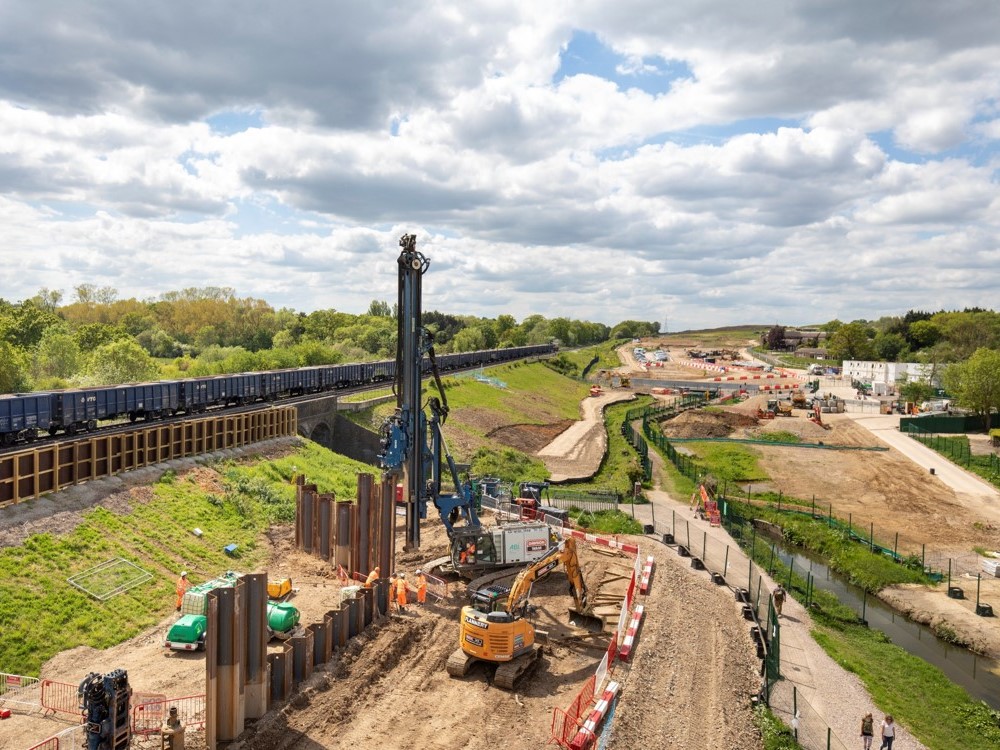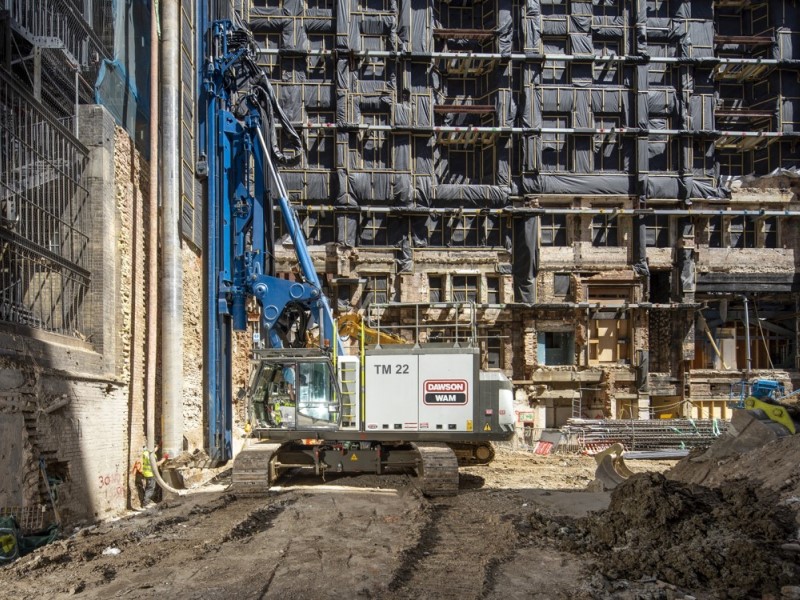London: 1-4 Marble Arch
PROJECT DETAILS
CLIENT:
Portman Estate
DESIGN ENGINEER:
akt II & CGL
MAIN CONTRACTOR:
Galliford Try
PROCUREMENT ROUTE:
JCT
LOCATION:
London
DAWSON-WAM was contracted by Galliford Try to provide all the close proximity secant piling and buttress piling on this complex basement deepening project just off Oxford Street in London.
Due to the considerable construction challenges associated with the project Galliford Try engaged with DAWSON-WAM at a very early stage. The team of Portland Estate – Galliford Try – DAWSON-WAM benefited from the successful delivery of another extremely complex project of 1-9 Seymour Street, a short walk from this project.
Constructed in the late 1920s this seven-storey building was originally a residential block with the retail on the ground floor, through the upper floors were converted into offices during the 1940s.
The new design consists of the refurbishment and reconfiguration of its internal structure while retaining the external stone and brick façade that, along with the symmetrical façade of the opposing Cumberland Hotel, provides a striking backdrop for the Grade I-listed Marble Arch.
The existing structural frame comprised steel beams and columns encased in concrete or brickwork with the outer façade retained and supported in the temporary condition during demolition of the internal structure and construction of the new core.
The new building included a deepening of the existing basement from 1 to 2 storeys and constructions of a further eighth floor to increase the floor area.
The existing façade was retaining by a heavy duty steel frame on two sides, with the other two side bounded by >7 storey buildings constructed tight to the boundary lines. The only access available into site was via a pre planned opening in the façade and supporting structure measuring 3.5m by 3.5m allowing 150mm clearance all around for one of DAWSON-WAM’s specialist ABI TM22 piling rigs.
The access was complicated further by the requirement for the piling rig to immediate descend a ramp to the existing basement level some 4m below road level, with the construction of the ramp taking up over 40% of the footprint of the site. Good planning seen the rig access and egress the building footprint without incident with the team receiving praise from Westminster City Council for their efforts
All of the works were delivered through and opening 3.5m by 3.5m in the façade which was some 4m above the piling platform level. This meant that a significant ramp was required to allow the delivery of plant and equipment, and the works had to be carefully planned to allow removal of the ramp, installation of the secant piles along the ramp position and then reinstatement of the ramp. This meant that for a 3 week period while this was happening no materials could be delivered to site and no spoil could leave site.
The footprint of the development was approximately 45m by 25m, with working area shared with demolition and RC subcontractors. The ground conditions on site consisted of made ground overlying saturated sand and gravels with piles found deep into the London clay.
In all over 85 linear meters of 525mm diameter secant piles at 450mm centres were installed in a hard/hard configuration to maximise the water retention properties. As all piles, including primary piles, were installed using a structural grade concrete, axial load from the new structure was easily transferred into the soil and was benefited by an enhanced bond in the pile interlock when compared to hard/soft or hard/firm combinations.
As part of the BREEAM Excellent achievement a high cement replacement percentage of 78% was utilised in the concrete mix for the piles.
Due to the clients requirement to maximise the basement footprint where possible a Cased CFA solution was proposed which utilised a close proximity system VDW (Von Der Wand) where a casing and auger are installed together, removing spoil as it is installed, and then forms the pile using CFA techniques, removing the casing and auger as concrete is pumped through the stem of the auger. This system provided vertical tolerances of greater than 1:150.
During the works it became evident that existing foundations were more substantial than shown on record drawings and were not going to be removed in time to prevent a delay to the piling works. DAWSON-WAM and Galliford Try worked through a solution to bore through the existing foundation and form the piles secant piles without removal of the existing foundations. The piling rig was able to bore through mass concrete, rebar and in one instance a steel beam, to form the piles. The net result was an overall cost saving to the project as a significant proportion of wire sawing, stitch diamond drilling and demolition was removed from the requirement and the programme implications of this were mitigated to a large extent.
Works also included the installation of 12 buttress piles which are used, in lieu of flying shores, to provide lateral restraint to the secant wall and adjacent third party diaphragm wall. 15m long 305x305x393UCs weighting a hefty 5.9t each were to be installed into 600mm diameter CFA piles, however due to the hugely challenging logistics of getting these sections into site and lifting them into the pile the site team had to come up with a different solution.
An innovative proposal to combine the UC upper section with a reinforced cage lower section with quick and safe ‘Super Latch’ connection was used, reducing the weight of the system by almost 50% and making the pitching of the system into the pile much safer and more efficient utilising the rig mounted ancillary winch.



